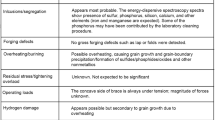Abstract
In this paper, we propose a non-Gaussion state space model to apply in software reliability. This model assumes an exponential distribution for the failure time in every test-debugging stage, conditionally on the state parameter — the number of faults in the program. It is a generalized JM model which can be applied to the imperfect debugging situation as well as in evolving programs. By examining a set of data on evolving program failures, the effect of evolving program model is amply proved.
Similar content being viewed by others
References
Basili, V. R. and Hutchens, D. H. (1983). An empirical study of a syntactic complex family, IEEE Trans. Software Engrg., SE-9(6), 664–672.
Becker, G. and Camarinopoulos, L. (1990). A Bayesian estimation method for the failure rate of a possibility correct program, IEEE Trans. Software Engrg., SE-16, 1307–1310.
Chen, Y. and Singpurwalla, N. D. (1994). A non-Gaussian Kalman filter model for tracking software reliability, Statistica Sinica, 4, 535–548.
Chen, Y. and Singpurwalla, N. D. (1997). Unification of software reliability models by self-exciting point processes, Adv. in Appl. Probab., 29, 337–352.
Crow, L. H. and Singpurwalla, N. D. (1984). An empirically developed Fourier series model for describing software failures, IEEE Trans. Reliability, 33, 176–183.
Dawid, A. P. (1984). Statistical theory: the prequantial approach, J. Roy. Statist. Soc. Ser. A, 147, 278–292.
Goal, A. L. and Okumoto, K. (1979). Time-dependent error-detection rate model for software reliability and other performance measures, IEEE Trans. Reliability, R-28(3), 206–211.
Jelinski, Z. and Moranda, P. B. (1972). Software Reiability Research. Statistical Computer Performance Evaluation (ed. W. Freiberger), 465–497, Academic Press, New York.
Langberg, N. and Singpurwalla, N. D. (1985). A unification of some software reliability models, SIAM J. Sci. Statist. Comput., 6, 781–790.
Littlewood, B. (1987). How good are software reliability predictions?, Software Reliability—Achievement and Assessment (ed. B. Littlewood), 154–166, Blackwell Scientific Publications, Oxford.
Littlewood, B. and Verrall, J. L. (1973). A Bayesian reliability growth model for computer software, J. Roy. Statist. Soc. Ser. C, 22(3), 332–346.
Littlewood, B. and Verrall, J. L. (1974). A Bayesian reliability model with a stochastically monotone failure rate, IEEE Trans. Reliability, R-23(2), 108–114.
Musa, J. D. and Iannino, A. (1981). Software reliability modeling—accounting for program size variation due to integration or design changes, ACM SIGMETRICS Performance Evaluation Review, 10(2), 16–25.
Musa, J. D., Iannino, A. and Okumoto, K. (1987). Software Reliability: Measurement, Prediction, Application, McGraw-Hill, New York.
Sahinoglu, M. (1992). Compound-Poisson software reliability model, IEEE Trans. Software Engrg., 18, 624–630.
Singpurwalla, N. D. and Soyer, R. (1992). Non-homogeneous autoregressive processes for tracking (software) reliability growth, and their Bayesian analysis, J. Roy. Statist. Soc. Ser. B, 54, 145–156.
Singpurwalla, N. D. and Wilson, S. P. (1994). Software reliability modeling, Internat. Statist. Rev., 62, 289–317.
Takahashi, N. and Kamayachi, Y. (1985). An empirical study of a model for program error prediction, Proceedings Eighth International Conference on Software Engineering, London, 330–336.
Zellner, A. (1986). Bayesian estimation and prediction using asymmetric loss functions, J. Amer. Statist. Assoc., 81, 446–451.
Author information
Authors and Affiliations
About this article
Cite this article
Chang, YC., Leu, LY. A State Space Model for Software Reliability. Annals of the Institute of Statistical Mathematics 50, 789–799 (1998). https://doi.org/10.1023/A:1003721232207
Issue Date:
DOI: https://doi.org/10.1023/A:1003721232207




